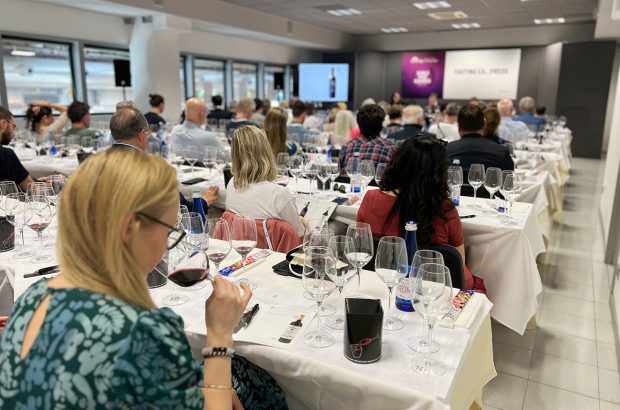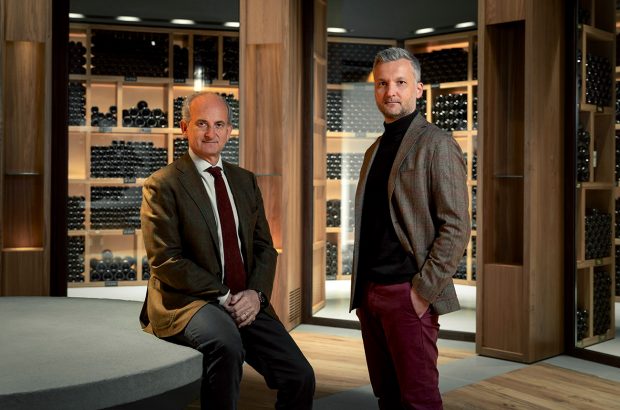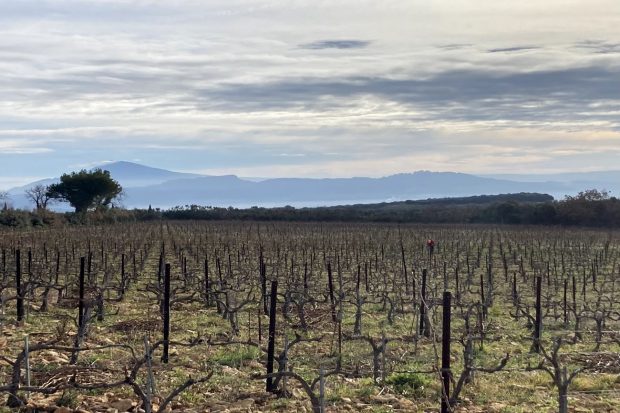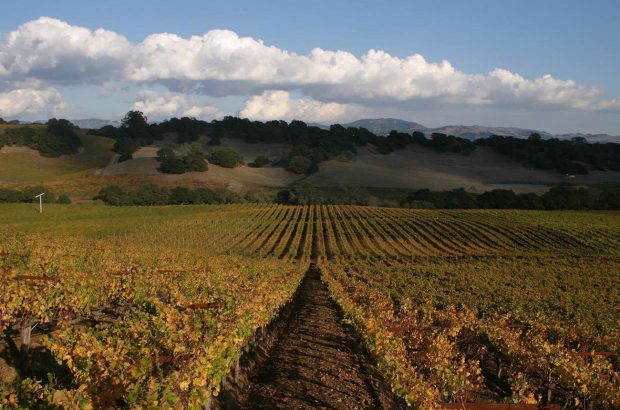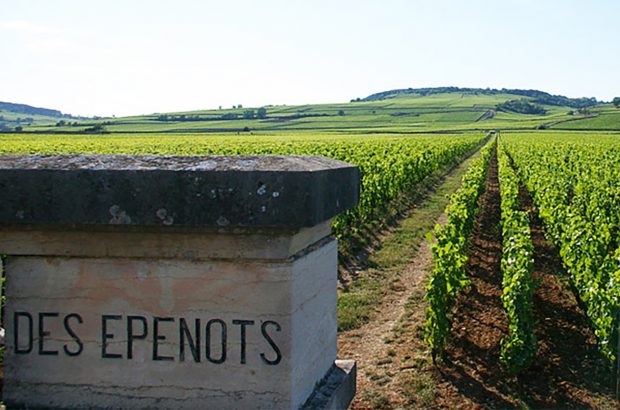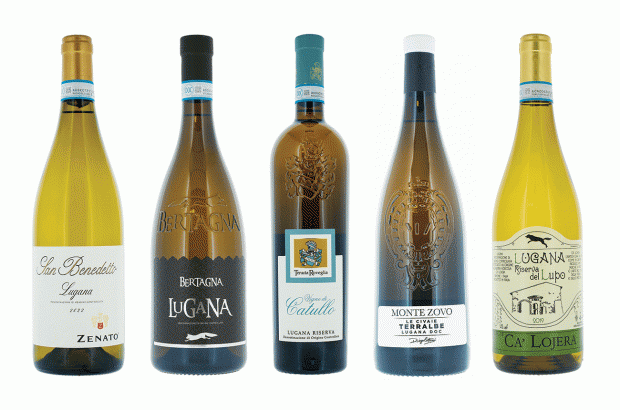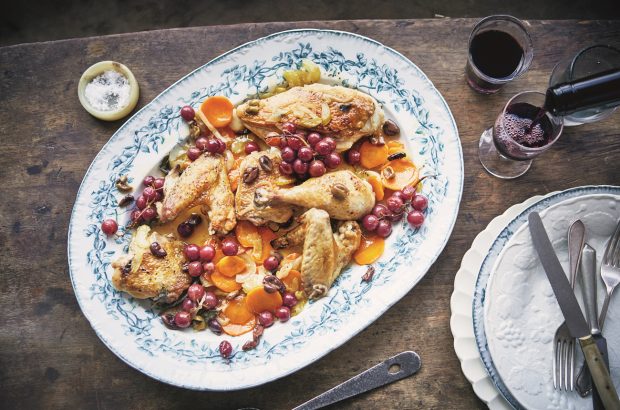- There is no universally accepted method of producing the style.
- Growers have created the Rutherglen Network and defined a hierarchy of quality.
- Some of the wines tasted lack richness and complexity, but they were fresh and stylish.
- It is hard to see a long-term future for the Rutherglen style.
‘Anyone seen Bill?’ Yes, Bill Chambers had been seen. As I loitered at the cellar door of the Chambers Rosewood winery, Bill’s wife Wendy chattered amiably and encouraged me to taste the bewildering variety of dry Chambers wines while we were awaiting her husband.
If you want to taste a 10-year Chasselas, or a wine called Blue Imperial (Cinsaut) or a blend of Riesling and Gouais (a truly obscure variety now revealed as the prime begetter of Chardonnay), then this is the place to come. Of course, the real purpose of any serious wine lover’s visit to Rutherglen is to taste, drink and buy its extraordinary Muscats. At Chambers, the Muscat bottles are placed to one side in the tasting room. Bill and Wendy don’t want to encourage the casual visitor to take slugs of wines that sell for up to A$85 (about £35) per half bottle.
After two hours I was wearying of hanging about in the tasting room, and muttered something about leaving. But I did want to meet Bill, who was learning Latin and Greek in his spare time just for the fun of it.
Bill Chambers is a shy, proud man, clearly happier with sheep than wine writers. He poured me his wines but had little to say about them, other than that one was older than another. And, with great generosity, he did give me a taste from his cask of pre-phylloxera Muscat, a viscous smear of dark brown treacle with sensational intensity of flavour, an irreplaceable cache of wine history.
I had come to Rutherglen because I had admired its Muscats and ‘Tokays’ for decades, but had only the vaguest idea how they were made. I was only slightly the wiser when I left. Each winery adopts a slightly different approach and there is no universally accepted method of producing the style.
No one, not even the descendants of the original settlers such as Dave Morris and Bill Chambers, could explain why their forefathers had planted grapes in a flat, seemingly unpromising region in northeastern Victoria. Bill suggested that the gold rush of the mid-19th century had brought a captive market to the region, and the proximity of the Murray River provided a means of transporting wine to the cities. Their ancestors planted a plethora of grapes, mostly suited to the production of fortified wines, which were more stable than table wines.
Muscat is identified locally as Brown Muscat and appears to be Muscat à Petits Grains. ‘Tokay’ is a misnomer for Muscadelle. With age the two styles grow in similarity, although ‘Tokay’ retains a malty butterscotch flavour, in contrast to Muscat’s more obvious figgy raisiny richness.
There is no standard method of harvesting the grapes. Clearly they need to be very ripe so as to provide the sugar that is essential to any sweet fortified wine. Nobody picks at much below 16 degrees of potential alcohol, and some prefer to wait for 20. Occasionally, as in 1998, it’s possible to attain must weights of close to 30 degrees.
Chris Pfeiffer, a relative newcomer to Rutherglen, points out: ‘The danger of waiting for super-ripeness is both the risk involved in leaving bunches on the vine in troubled weather, and the possibility that the grapes will raisin. Each grower has his own viewpoint, but I don’t want the taste of raisined fruit in my wine. In fact, I think the reason why our sweet wines are so great is that Rutherglen isn’t scorching hot, and so we don’t get routine raisining. The ideal system is to allow the grapes to ripen slowly and to harvest selectively, so that you can have a number of bites of the cherry.’
Nor is there any uniform view about ideal yields. Some wineries, such as Chambers and Morris, have yields of a trifling 2.5 tons per hectare. Others belonging to Pfeiffer and Campbell, who irrigate, give higher yields, without any apparent slump in fruit quality.
Once the fruit is picked, it is fermented for about 24 hours, then dosed with alcohol to arrest fermentation, leaving a high degree of residual sugar in the wine. At some wineries, notably Morris, fermentation takes place in a large open troughs, rather like deep Portuguese lagares. When stable, the wine is transferred into casks for ageing. Most growers have a preference for hogsheads or larger sizes as the cask size clearly affects the rapidity of the wine’s evolution.
From that point on, it’s every man for himself. At Campbell’s there is a clear solera system. Colin Campbell stresses the importance of selecting the right blend to top up the solera, from which only five percent is withdrawn for bottling each year. ‘ If you mess up the wine that enters the solera, you can mess up the entire stock for the final wine as it passes through the solera system.’
At other wineries, the various bottlings are made up by blending, with a view to obtaining consistency of flavour, intensity and style. Some producers operate a ‘modified solera’, but this can mean anything. Chris Pfeiffer, on noting that a particular vintage has failed to provide first-rate wine, will consign it to a lesser blend, while top vintages will be set aside, or blended, to provide material for the very best offerings.
Dave Morris pulled out a dozen vintages from cask for me, each, inevitably, with a slightly different character. The final wine was from 1947, and as we toyed with assembling various blends, I understood the crucial part played by very old wines which have tremendous potency as blending agents.
Until recently, each producer had his own way of signifying quality and age in a wine, using terms such as ‘Premium’, ‘Special’ or ‘Old’. In response, a majority of Rutherglen growers have created the Rutherglen Network and defined a hierarchy of quality. A basic Muscat or Tokay of good quality is labelled as Rutherglen Muscat. Thereafter the ascent in quality goes from Classic to Grand to Rare. There are no specified criteria for each level but each winery is trusted to ensure that its wine is worthy of the category, and peer pressure deters any abuse of the system. Nor is every winery obliged to produce each category. Where wineries have established brand names – such as Campbell’s Isabella Tokay – its labels retain the brand name and add the word Rare. So it’s still confusing, but less confusing than it used to be.
The major players all make great Muscats and Tokays according to house styles. Chambers and Morris probably enjoy the highest reputation, and their wines are certainly among the richest and most profound. Chambers’ Rare Muscat contains wines up to 90 years old. Although the slick presentation of its wines may suggest a more commercial quality level, Campbell’s wines possess an extra dimension of elegance.
All Saints, now under the sole ownership of Peter Brown, one of the celebrated Brown brothers, sold off substantial stocks of wine 10 years ago, however, plenty remains. Its Classic Release Tokay and Muscat are pure in flavour, finely textured and not too heavy, offering very well balanced wines at a fair price. At the top of the range is its Museum Releases, available only in tiny quantities and at prices that would make even a Bordeaux proprietor blush.
Baileys is now owned by Mildara Blass, which gives it a different reputation, but its Founders range of Tokay and Muscat is excellent and relatively inexpensive, offering mouthfuls of rich, figgy fruit.
Andrew Buller seeks to make a rich, even heavy style and will incorporate press wines into the blend. Buller’s has a large, if chaotic-looking store of old wines with no formal solera system. His best wines are the Museum Releases that have a bracing and palate-cleaning acidity as well as richness and aromatic complexity.
Dave Morris is master blender. Every time he draws off some wine, he must ponder carefully the wines with which the cask is refreshed. He doesn’t operate a solera: ‘The drawback of the solera system is that you have to put all your eggs into one basket.’ His greatest wines are the Old Premium range. the ‘Tokay’ and Muscat are equally lovely, though rich and tarry. The bargains of his range are the Special Release wines, that are half the price of the Old Premiums, and close rivals in intensity and quality.
Chris Pfeiffer, handicapped by a lack of stocks, acquired some older wines to help blend a lush but fresh Classic Tokay. I have had good bottles from Stanton & Killeen in the past, but some of the wines I tasted in Rutherglen seemed to lack richness and complexity, but they were fresh and stylish. The Collectors (ie Grand) Muscat is intense and piquant with a distinct rancio tone.
Despite the recent fashion, it is hard to see a long-term future for the Rutherglen style. Production of the best wines is inevitably limited and once a producer leaves the sector, it’s for good. It also takes serious time to build stocks of older blending wines. Renewed demand, however, will stimulate these individual growers and producers to maintain their traditions, and higher prices will help ensure that their stupendous wines will no longer be loss leaders.





